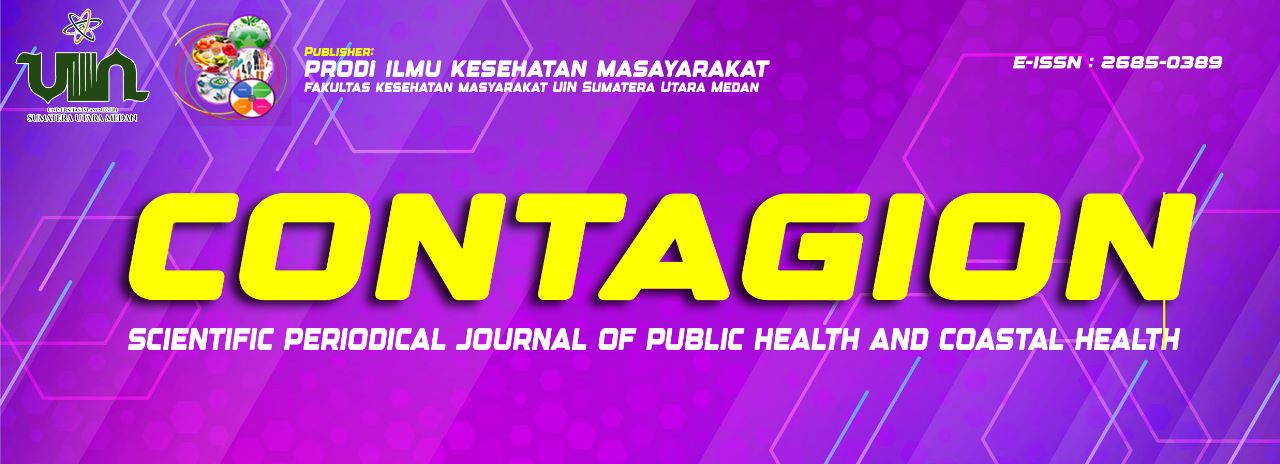Task Technology Fit in Hemodialysis Care: A Comparative Evaluation of the Renalmu.com Application in Indonesian Hospitals
Abstract
Hemodialysis services are essential for patients with end-stage renal disease (ESRD), offering routine treatment to sustain health and enhance quality of life. As the prevalence of ESRD continues to rise, hemodialysis units must focus on delivering high-quality care, optimizing resource management, and ensuring patient satisfaction. To support these goals, this study employs a quantitative comparative design with a cross-sectional approach to assess the effectiveness of the Renalmu.com application in hemodialysis services. The study will include 30 respondents from two hospitals, with data analysed using the Mann-Whitney U test to compare key variables. Data collection is scheduled to begin in September 2024 and conclude in March 2025. Preliminary results from the Mann-Whitney U test indicate that while both hospitals reported similar experiences across most dimensions of the Renalmu.com application, a significant difference was observed in the Task Technology Fit (TTF) dimension of data quality. Hospital 1 demonstrated superior data quality, reflected by a U-value of 56.500 and a p-value of 0.013. No significant differences were found in other TTF dimensions, including task characteristics (non-routine, interdependence), site graphic attractiveness, privacy/security, interactivity, data locability, authorization, compatibility, product timeliness, reliability, ease of use, and user relationships. These findings suggest that the primary distinction between the two hospitals lies in the effective utilization of data quality to support clinical decision-making in hemodialysis treatment
Keywords: Task-Technology Fit, Dialysis, Quality Service improvement
Full Text:
PDFReferences
Alhendawi, K. M. (2022). Task-technology fit model: Modelling and assessing the nurses’ satisfaction with health information system using AI prediction models. International Journal of Healthcare Management, 1–13. doi: 10.1080/20479700.2022.2136881
Buyantur, O., Tumurchudur, S., Ochirbat, M., & Mashlai, Z. (2023). Role of Training in The Successful Implementation of Hospital Information Systems. Embedded Selforganising Systems. doi: 10.14464/ess.v10i7.659
Canaud, B., Davenport, A., Leray-Moragues, H., Morena-Carrere, M., Cristol, J. P., Kooman, J., & Kotanko, P. (2024). Digital Health Support: Current Status and Future Development for Enhancing Dialysis Patient Care and Empowering Patients. Toxins, 16(5), 211. doi: 10.3390/toxins16050211
Chavarnakul, T., Lin, Y.-C., Khan, A., & Chen, S.-C. (2024). Exploring the Determinants and Consequences of Task-Technology Fit: A Meta-Analytic Structural Equation Modeling Perspective. Emerging Science Journal, 8(1), 77–94. doi: 10.28991/ESJ-2024-08-01-06
Cohen, J. (2013). Statistical Power Analysis for the Behavioral Sciences. Routledge.
Dishaw, M. T., & Strong, D. M. (1999). Extending the technology acceptance model with task–technology fit constructs. Information & Management, 36(1), 9–21. doi: 10.1016/S0378-7206(98)00101-3
Field, A. (2013). Discovering Statistics Using IBM SPSS Statistics. SAGE Publications. Retrieved from https://books.google.co.id/books?id=srb0a9fmMEoC
Floroian, L. (2022). Aplicație pentru managementul datelor într-un spital intelligent | [Data management application in a smart hospital]. Jurnal Medical Braşovean, 59–65. doi: 10.31926/jmb.2021.2.5
Gehrmann, J., & Beyan, O. (2024). Data Quality in Medical Real-World Data—An Oncological Use Case. Studies in Health Technology and Informatics, 316, 9–13. doi: 10.3233/shti240332
Goodhue, D. L., & Thompson, R. L. (1995). Task-Technology Fit and Individual Performance. MIS Quarterly, 19(2), 213–236. doi: 10.2307/249689
Guetibi, S., Hammoumi, M. E., & Brito, A. C. (2024). Three dimensions’ comparison of two hospital centres: Usefulness, ease of use and functional analyses of the information system. doi: 10.21203/rs.3.rs-3866720/v1
Huang, L. (2019). Hemodialysis data information monitoring system.
Khedekar, L., Mohite, A. D., Kamat, A. M., Topugol, A. A., Atale, P. D., & Asniyekar, P. S. (2024, November 15). Innovating Healthcare: Developing a Comprehensive Patient Record Tracker System for Enhanced Medical Data Management and Patient Care [SSRN Scholarly Paper]. Rochester, NY: Social Science Research Network. doi: 10.2139/ssrn.5086771
Laurier, N., Robert, J.-T., Tom, A., McKinnon, J., Filteau, N., Horowitz, L., … Trinh, E. (2025). Optimizing use of an electronic medical record system for quality improvement initiatives in hemodialysis: Review of a single center experience. Hemodialysis International, 29(1), 74–82. doi: 10.1111/hdi.13178
Reyana, A., Kautish, S., & Gupta, Y. (2021). Chapter 6—Emergence of decision support systems in healthcare. In P. N, S. Kautish, & S.-L. Peng (Eds.), Demystifying Big Data, Machine Learning, and Deep Learning for Healthcare Analytics (pp. 109–128). Academic Press. doi: 10.1016/B978-0-12-821633-0.00004-0
Shutov, E., Bolshakov, S. V., & Kotlyarova, G. (2023). #4747 the application of modern medical information systems with artificial intelligence elements for personalized treatment of patients on hemodialysis. Nephrology Dialysis Transplantation, 38(Supplement_1). doi: 10.1093/ndt/gfad063c_4747
Singh, K. (2021). Mobile Health in Dialysis: The Best Engagement Medium Is the One that’s with Patients. Clinical Journal of the American Society of Nephrology : CJASN, 16(1), 12–13. doi: 10.2215/CJN.18051120
Singh, K., Diamantidis, C. J., Ramani, S., Bhavsar, N. A., Mara, P., Warner, J., … Wright-Nunes, J. (2019). Patients’ and Nephrologists’ Evaluation of Patient-Facing Smartphone Apps for CKD. Clinical Journal of the American Society of Nephrology, 14(4), 523. doi: 10.2215/CJN.10370818
Taj, A., Razzaq, T., Azeem, M. S., Bangash, S. A., Mazhar, T., & Ahmed, N. (2024). Impact of artificial intelligence on clinical decision support systems in hospital settings. 2(2 (Health&Rehab)), 255–259. doi: 10.71000/ijhr202
Tsakiridis, D., Vasiliadis, A., & Tsakiridis, Y. (2023). Implementation of a System for the Real-Time Recording of Patient Medical Data both Within and Outside the Hemodialysis Unit. 2023 14th International Conference on Information, Intelligence, Systems & Applications (IISA), 1–6. doi: 10.1109/IISA59645.2023.10345913
Nisak, U. K., Cholifah, & Kautsar, I. A. (2024). Peran Teknologi pada Mutu Pelayanan Kesehatan. Jawa Timur :PT Literasi Nusantara Abadi Grup. https://penerbitlitnus.co.id/portfolio/peran-teknologi-pada-mutu-pelayanan-kesehatan/
Varela, L. O., Sandhu, N., Walker, R. L., Southern, D., Quan, H., & Eastwood, C. (2024). Development of Data Quality Indicators for Improving Hospital International Classification of Diseases–coded Health Data Quality Globally. Medical Care. doi: 10.1097/mlr.0000000000002024
Vasanthakumar, G. U., Dankan Gowda, V., Manage, P. S., Prasad, K. D. V., Hariram, V., Vasanthakumar, G. U., … Hariram, V. (2024). Electronic Health Records (EHR) and Clinical Decision Support Systems: Integrating AI Solutions [Chapter]. doi: 10.4018/979-8-3693-0807-3.ch013
White, S. (2020). Calculating and Reporting Healthcare Statistics. AHIMA Press.
Xu, J., Guo, S., Yu, X., & Ji, X. (2024, November 26). Willingness and influencing factors of maintenance hemodialysis patients to use mobile healthcare apps: A cross-sectional study. Research Square. doi: 10.21203/rs.3.rs-5309337/v1
Yonata, A., Islamy, N., Taruna, A., & Pura, L. (2022). Factors Affecting Quality of Life in Hemodialysis Patients. International Journal of General Medicine, 15, 7173–7178. doi: 10.2147/IJGM.S375994
Yuliawati, A. N., Ratnasari, P. M. D., & Maharani, N. L. P. S. (2023). Quality of Life in End-Stage Renal Disease Patients Undergoing Hemodialysis and Its Affecting Factors in a Hemodialysis Unit of General Hospital Denpasar. Borneo Journal of Pharmacy, 6(3), 320–329. doi: 10.33084/bjop.v6i3.3907
Yusoff, H., Ruhaiyem, N. I. R., & Zakaria, M. H. (2021). SMARTS D4D Application Module for Dietary Adherence Self-monitoring Among Hemodialysis Patients. In F. Saeed, F. Mohammed, & A. Al-Nahari (Eds.), Innovative Systems for Intelligent Health Informatics (pp. 52–60). Cham: Springer International Publishing.
DOI: http://dx.doi.org/10.30829/contagion.v7i2.24100
Refbacks
- There are currently no refbacks.
Copyright (c) 2025 Umi Khoirun Nisak, Irwan Alnarus Kautsar, Yahya Arif Nugroho, Aditiawardana Aditiawardana, Hamid Al-Tameemmi

This work is licensed under a Creative Commons Attribution-ShareAlike 4.0 International License.






